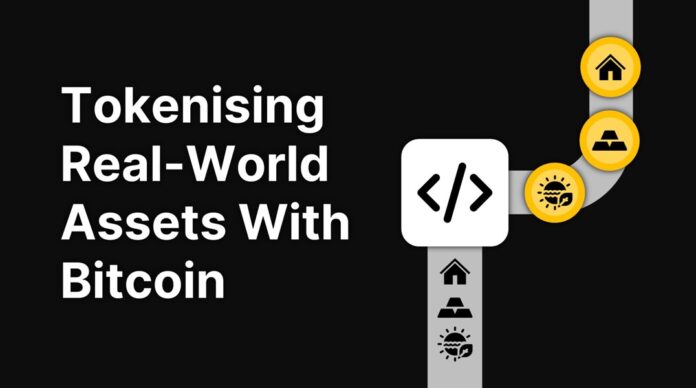Tokenisation is the innovative process of transforming asset rights into digital tokens on a blockchain, redefining asset ownership and investment. Bitcoin, a leader in blockchain technology, is at the forefront of this revolution, enhancing the accessibility and liquidity of real-world assets.
Tokenisation converts tangible assets like real estate, art, commodities, and intellectual property into digital tokens on a blockchain, allowing for fractional ownership and trade. Bitcoin has since evolved from a digital currency to a robust platform for tokenisation, thanks to its decentralised and secure blockchain.
The shift to digital tokens offers significant benefits. Enhanced liquidity is a major advantage; tokenised assets on platforms like Bitcoin can be traded around the clock, unlike traditional markets with fixed trading hours. This flexibility leads to more dynamic markets.
Another key benefit is the transparency and security of blockchain technology, which reduces fraud risks and ownership disputes, increasing investor confidence.
Furthermore, tokenisation simplifies asset management. It cuts traditional barriers like paperwork and intermediaries, reducing costs and streamlining investment processes.
The Process of Tokenizing Real-World Assets with Bitcoin
Tokenising real-world assets using Bitcoin involves a structured and meticulous process. Let’s walk through the process:
- Asset Identification and Valuation: The first step is identifying a suitable asset for tokenisation. This could be anything from real estate and art to commodities. The asset is then appraised to determine its market value, which is crucial for pricing the tokens accurately.
- Legal and Regulatory Considerations: Tokenisation must comply with the legal and regulatory frameworks of the jurisdiction where the asset is located. This involves understanding and adhering to securities, taxation, and digital asset laws. Due diligence is essential to ensure the tokenisation process aligns with local regulations.
- Creation of Digital Tokens on the Blockchain: Once the asset is valued and legal considerations are addressed, the next step is creating digital tokens on the Bitcoin blockchain. These tokens represent fractional ownership or rights to the underlying asset. The process involves developing smart contracts defining ownership, transfer, and other relevant rules.
- Distribution and Trading of Tokens: These tokens are distributed to investors through direct sales or exchanges after creation. The tokens can then be traded, allowing investors to buy or sell their shares in the underlying asset.
Advantages of Using Bitcoin for Tokenisation
The use of Bitcoin for tokenisation offers several distinct advantages:
- Decentralisation and Security: Bitcoin’s blockchain is decentralised, meaning any single entity does not control it. This decentralisation enhances the security of the tokens, as it reduces the risk of fraud and manipulation.
- Enhanced Liquidity and Accessibility for Investors: Tokenisation with Bitcoin makes traditionally illiquid assets like real estate and art more liquid. It allows investors to buy and sell fractions of these assets, making them more accessible to a broader audience.
- Cost Efficiency: Tokenising assets on the Bitcoin blockchain can significantly reduce transaction and management fees. Eliminating intermediaries and streamlining processes reduces the costs associated with traditional asset management.
- Global Reach and 24/7 Trading Capabilities: Bitcoin operates on a worldwide scale, enabling investors from around the world to participate in the tokenised asset market. Additionally, the Bitcoin network is operational 24/7, allowing continuous trading of tokens without the constraints of traditional market hours.
- Real-Time Tracking and Transparent Ownership Records: The blockchain’s transparent ledger provides real-time tracking of transactions and clear ownership records. This transparency ensures that every transaction is recorded and accessible, enhancing trust and accountability in the investment process.
Real-World Applications
Bitcoin’s tokenisation has been applied in various sectors:
- Real Estate: Enabling fractional ownership of property.
- Art and Collectibles: Allowing art enthusiasts to own shares of rare artworks.
- Commodities, Such as gold and oil, provide a more accessible investment platform.
Future Outlook and Potential Developments
The future of tokenising assets on the Bitcoin blockchain is promising:
- Market Growth: Predicted to see significant expansion in the coming years.
- Impact on Traditional Finance: Potentially transforming asset management and investment.
- Emerging Trends: The tokenisation of more diverse asset classes and integration with other technological advancements.
Bottom Line
Tokenising real-world assets with Bitcoin marks a significant asset management and investment shift. It democratises access to high-value assets and enhances liquidity, although it faces regulatory and technological challenges. As the landscape evolves, engaging with this technology could offer unprecedented opportunities in the financial world.






